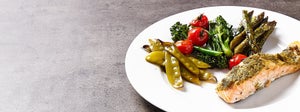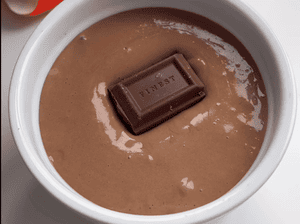
The Barbell Hip Thrust

You want to drive with the hips bridging up into the movement,” beginning with the bar touching the ground and ending in full hip extension” (1). Your shoulder blades should stay planted on the bench you are using for support to complete the bridge. You should be able to feel the contraction in your glutes (butt cheeks). I strongly recommend using a squat sponge or some type of pad when performing this exercise as the barbell can really wreck your pelvis.
I have made the mistake of performing these without a pad before and ended up black and blue in all the worst places.
Now, why should you choose a barbell hip thrust over a machine for example? Well, if you care about muscle activation here is a good reason “Barbell exercises are a staple in strength and conditioning programs around the world, and typically outperform machine exercises in muscle activation.” (1). This could be important if you are attempting to build and strengthen the glutes. Bret Contreras, whom is known as the glute guy, also found that biceps femoris (one of the muscles in the hamstrings) activation was higher in the barbell hip thrust than the barbell squat as well (1).
The American Hip Thrust
Here we have another hip thrust utilizing a barbell, however in this variation we see more posterior pelvic tilt (1). Posterior pelvic tilt is when the pelvis (hips) tilt towards the posterior/back. This results having the appearance of a “flat back” in particular in the lower back. When performing this variation, you will also be resting the back against the bench at the very bottom or inferior portion of the scapulae/shoulder blades. Other than this change, the movement is essentially the same, beginning with the barbell on the floor and ending in a bridge. “Research has shown that PPT can enhance gluteus maximus activation” (1). Taking this into consideration utilizing this method may increase activation of the gluteus maximus however this variation is best suited for the more experienced lifters as it requires a bit more practice to perform safely.
The Banded Hip Thrust
This is one of my personal favorites for hip thrust variations. “Bands have recently been shown to elicit similar levels of EMG amplitude compared with free weights” (1). On top of eliciting a similar amplitude, I love that the resistance increases as you progress through the repetition. This is also known as variable resistance training as the amount of resistance changes throughout the rep. Because of this however, banded exercises may elicit higher activation during one portion of the movement, which depending on your goals may create an issue.
Kettlebell Hip Thrusts

There are two variations to using kettlebells for hip thrusts. The first I want to talk about is using a kettlebell in place of the barbell. This consists of the same setup and procedure as the barbell hip thrust but simply uses a kettlebell in place of the barbell. The second variation for kettlebell hip thrusts is a standing kettlebell hip thrust.
To perform this variation, hold the kettlebell in between the legs, allowing it to be low enough that it is not going to hit you in the groin. Make sure your legs are also far enough apart so that the kettlebell does not slam into your legs also. Start by holding the kettlebell with both hands, begin the repetition by softening the knees allowing your hips to come back and then extend the hips forward and pushing the kettlebell forward and up. Make sure to prepare for the kettlebell to return down and soften the hips to help absorb the momentum of the kettlebell to help prevent injuries.
Single Leg Hip Thrusts

Well, let’s be honest, this is the exact same as the barbell hip thrust except using one leg at a time. This can be useful for working on fixing imbalances but can also require much more coordination that using both legs. You can also use a band to do these as well, it comes down to your personal preference.
So Which One Is Best?
If your concern is the amount of gluteal activation, then the barbell hip thrust elicited higher mean activation than the American or banded variation (1). Now, not a lot of actual research has been done on these movements and most of the research that has been done is by Bret Contreras. So, concerning which variation is best for you, the best variation is the one you are most comfortable with, enjoy most, and are able to execute safely. If you find that you have imbalances, then you may want to focus more on a single leg thrust variation as well.
In the end, it is really up to you, the one you enjoy the most is the one you are most likely to consistently perform. Keeping that in mind, you can use these exercises to help build those granite shelf glutes you’ve been dreaming about.









